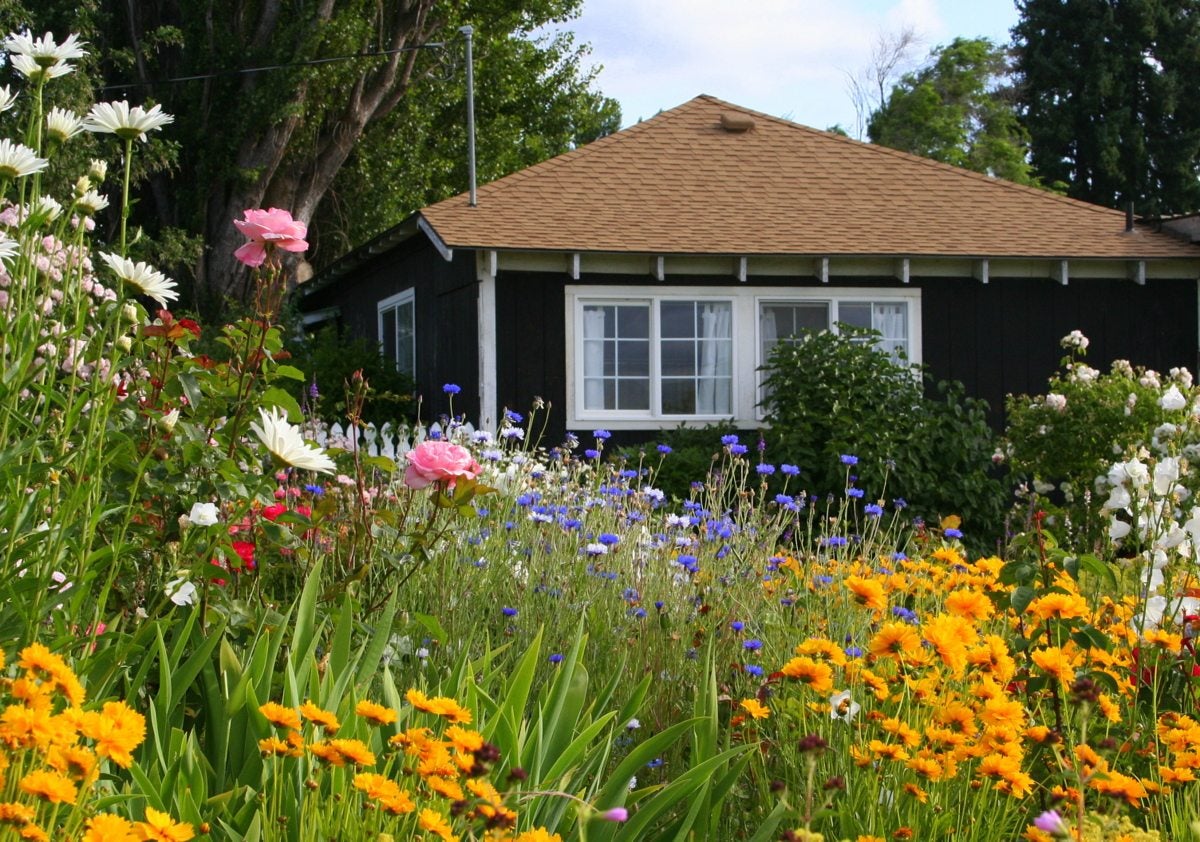Learn To Plant A Basic English Cottage Garden
Charming English cottage gardens can include a wide variety of flowers and vegetables. Enjoy bringing an old-fashioned vibe to your garden.

How To Plant A Cottage Garden
In the days of old England, many of the peasant workers in small villages owned small houses with very small gardens.
These gardens, known as English cottage gardens, supplied the family with all of their gardening needs. The kitchen garden often consisted of vegetables and mixed fruits. In among food-producing plants were many types of flowers.
Cottage Garden Info
Cottage gardens are similar to Colonial gardens and are designed much the same way using many of the same types of plants. The most popular flowers found within an English cottage garden would be:
- Hollyhocks
- Delphiniums
- Daisies
- Herbs - mint being one of the most popular
With their mystical charm and abundance of scents, English cottage gardens exhibited a style that evolved through the necessity of the times. Many families would have gone hungry without the benefit of home-grown produce.
Unlike the peasant gardens, the gardens of the landowners, or gentry, were very formal with square hedges of boxwood, straight lines, stone paths, and many with wonderful statues depicting the gods of ancient times. They would also have fountains with water flowing into a lake or pond. They were considered by some to be classic with their order and discipline.
When a more romantic influence evolved, plants were considered to have an emotional affect on humans, and the cottage garden was born out of this movement.
One of the most famous cottage gardens was designed by the French impressionist painter Claude Monet. The cottage gardens, with their abundance of roses growing over fences and their vine-covered arbors with flowers climbing towards the sun, are now commonly emulated in the North.
Gardening tips, videos, info and more delivered right to your inbox!
Sign up for the Gardening Know How newsletter today and receive a free copy of our e-book "How to Grow Delicious Tomatoes".
Creating an English Cottage Garden
An informal style of tall, wonderful perennials battling it out for space in the back of the borders, created a profusion of textures and substance, and the smaller plants in the front of the borders seemed determined to lift their heads to the sun, not to be outdone by their taller cousins. Together they created a palette of color that would be very hard to outdo.
An advantage to having this kind of garden is that it reduces the amount of weeds that grow, as the branching out of the plants hides the sun from getting through to the ground and, therefore, snuffs out the chances of weeds germinating.
To create a cottage garden, don't be afraid to plant seeds close together, as this creates the effect you are looking for.
Go for a variety of shapes. Plant feathery plants amidst spiky ones; use bold leaf plants with delicate ones. Put a sprawling plant next to an upright one.
The best rule of thumb is to plant tall at the back and short in the front of your borders.
In most cases, try to plant in odd numbers of three, five, etc. and in very large borders, try groupings of up to seven or nine of the same plant. This method gives depth and structure to your borders.
Also, keep foliage in mind. Some gardeners say foliage is more important than blooms, but the sight of colored blossoms nodding in the breeze and turning up to the sun can be more satisfying.
In the end, it all comes down to personal taste, but whether you like straight-line gardening, formal gardening, or cottage gardening, get your hands dirty and have fun!
-
 Types Of Tomatoes Explained: Explore The Many Wonderful Shapes, Colors, Flavors, & Best Uses
Types Of Tomatoes Explained: Explore The Many Wonderful Shapes, Colors, Flavors, & Best UsesThe world of tomato varieties is vast and fascinating. Learn about the key types to grow in your garden, tailored to your preferences and space.
By Amy Grant
-
 Try The Trend – Turn Any Bed Into A Keyhole Garden With This Clever In-Ground Composter
Try The Trend – Turn Any Bed Into A Keyhole Garden With This Clever In-Ground ComposterKeyhole gardening is an efficient and sustainable practice that saves space. Get started on this DIY project quickly and easily with an in-ground composter.
By Bonnie L. Grant